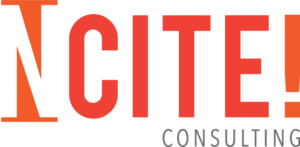The COVID-19 pandemic has created a long, wild ride with far-reaching impact for our beloved nonprofit sector. The disruptive effects from this pandemic are different than what nonprofits have faced in the past – the pandemic has cut across all segments of nonprofits. We’ve discovered that revenue loss is not only defined by the source of funding; it is also tied to people gathering to receive or enjoy the experience our nonprofit offers. During the past year, nonprofits have had to manage increases in demand amid constrained capacity, concerns for the health and safety of staff and clients and availability of workers.
In spring 2020, nonprofit experts rallied in a show of support for this sector and suggested that nonprofits focus on two questions:
“What is the most useful first step to take in managing crisis or change?”
“What could a nonprofit do in a few hours to manage risk?”
Those two questions are still important. I would also offer that it’s critically important for you as a nonprofit leader, to build upon the three habits below:
- Understand your situation
- Determine and monitor your options
- Communicate and reflect
Understand your situation: Cash flow
Would you set out on a road trip without checking how much gas is in the tank? Of course not. Much like embarking on a journey, nonprofits are best able to make decisions when we have clear and accurate information, especially in times of change or crisis, when the fire hose is on full bore. I’m hoping you conducted a cash flow projection last spring. If you haven’t done a cash flow projection recently, now is the time! An accurate projection lets leadership and board see if and when the organization will face cash shortages.
Unlike a budget, which looks at revenue and expense over a period, typically a year, a cash flow projection maps actual cash and expense as it is received and used in smaller increments, typically months. A good projection includes cash on hand at the beginning of the month, expected revenue, and projected expenses. And, remember to account for proper timing of the release of any restricted grant dollars.
Remember, this is not a “one and done” exercise. Quarterly updates on your cash flow can help you avoid surprises.
If a cash shortage is expected, there may be options to consider.
- Is there an option to speed up collection of receivables?
- Is there an opportunity to ask funders and donors to convert restricted dollars to unrestricted funds for general operations?
- Are (cancelled) event goers willing to convert their sponsorship investment or ticket purchase price into a donation?
- What is the impact of non-mission-critical expenses? Are they necessary?
Once conversations related to revenue and expenses are exhausted, nonprofits will better understand if they need subsidy and financing. Do you have access to savings (reserves) and sources of working capital such as a line of credit? If taking these measures, include the board or board finance committee. The board is charged with risk management, and they should ensure that the use is aligned with mission-critical services, there is a clear plan for repayment, and an alignment with your ongoing operating plan. If it’s not in the best interest for you to take out a loan or use your line of credit – the board needs to make that call.
Determine and monitor your options
Once you understand your nonprofit’s current cash flow, it’s helpful to plan for different scenarios and gauge what needs to happen for you to maintain level services or take other measures.
Building realistic scenarios (“what ifs”) helps leadership respond to unpredictable situations. Nonprofits impacted by loss of revenue or employees unable to work need to continue to anticipate how these interruptions will affect programs and staff and be prepared with a response. Scenarios temper the chaos uncertain times can cause and gives nonprofits a chance to be thoughtful about big decisions that need to be made quickly and under pressure.
Scenarios are dynamic, which is why I suggest that clients consider three scenarios. Typically, nonprofits like talking about ‘best’ ‘base’ and ‘worst’. I encourage nonprofits to put careful thought behind scenarios such as What if:
- ‘if we can’t offer summer art classes and we lose 75% of our programming revenue’
- ‘if we receive a contract to serve 30% more clients, how many additional staff would we need to hire?’
Your projections allow leadership to inform the programmatic and financial narrative rather than relying on ‘gut feeling’ and ‘best guesses’.
Communicate and Reflect
Talking about money and scenarios can be overwhelming and awkward. Communicating with board, staff and supporters about the current situation and what is needed to fully respond is key for everyone to be able to do their part. I find that sharing stories of impact, combined with financial outcomes, tends to make these conversations easier – for you and for your audience. The more comfortable you become narrating your situation, your options, and what you need, the easier it is to work with staff, board and donors on finding a path forward.


